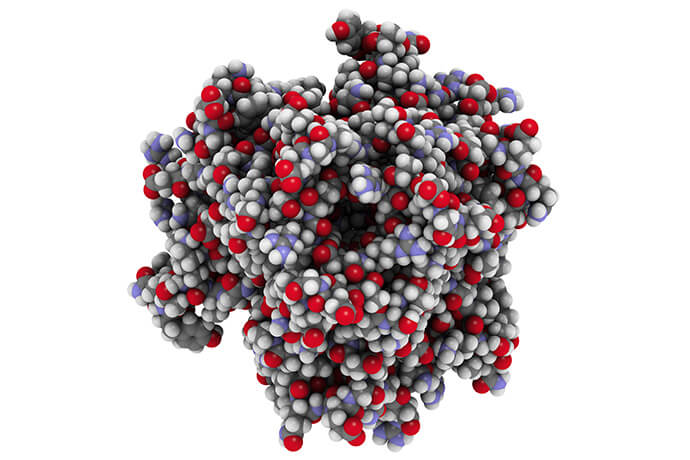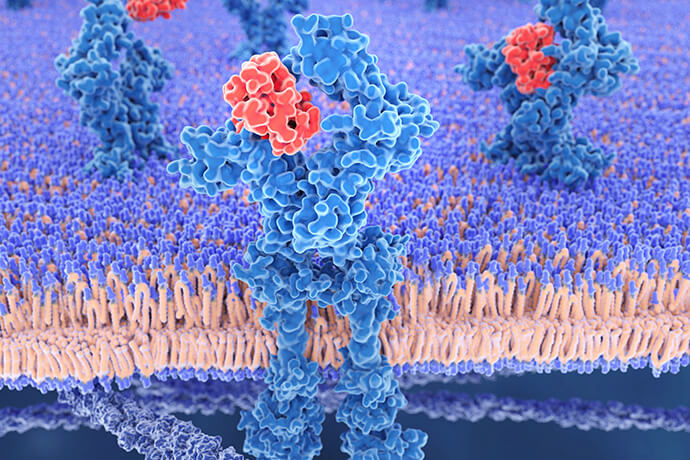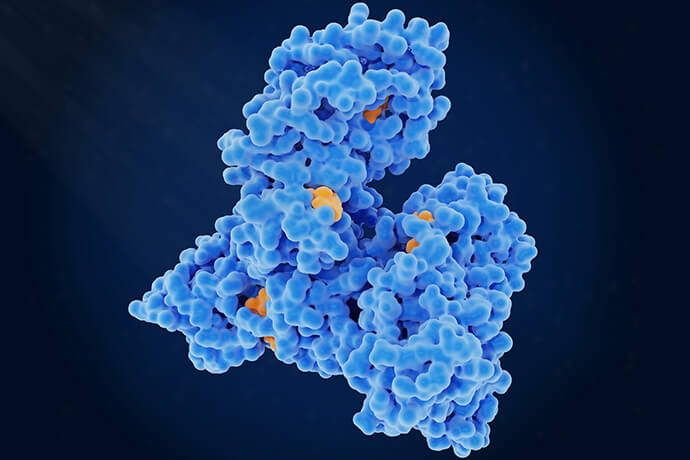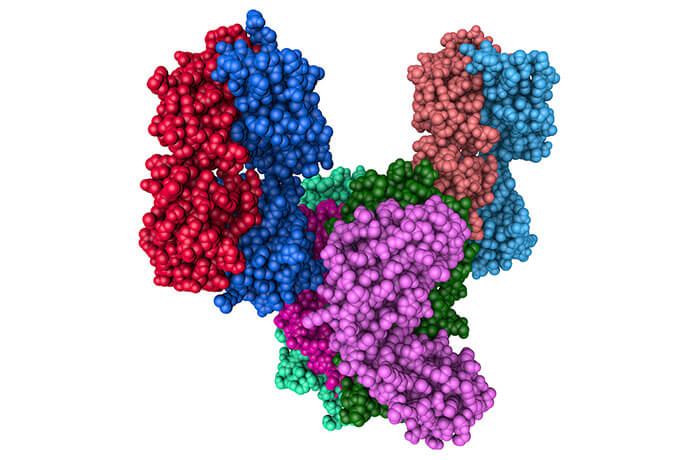What are cytokines?
Cytokines are a class of small soluble peptide proteins secreted by immune cells and tissue cells that play a reciprocal regulatory role between cells and are involved in cellular transmissions and interactions. More than 200 types of human cytokines have been identified, including interleukins (IL), colony-stimulating factors (CSF), interferons (IFN), tumor necrosis factors (TNF), growth factors (GF), chemokines, etc.
On the one hand, cytokines regulate the intrinsic and adaptive immune responses and perform functions such as anti-infection and anti-tumor; on the other hand, they trigger cytokine storm syndrome, leading to multi-organ damage and even organ failure and death.
What is cytokine storm or cytokine release syndrome (CRS)?
The typical immune response involves a step of cytokine production depending on the type of pathogen cleared, with the aim of coordinating lymphocyte differentiation. Once the infection is eliminated, the immune system will eventually self-regulate and shut down. However, in some cases, the immune response does not stop, but instead overproduces inflammatory cytokines, leading to systemic damage to host cells.
CRS is characterized by an aggressive pro-inflammatory response and an inadequate anti-inflammatory response, resulting in an imbalance in immune response homeostasis. Key indicators identified in cytokine storm studies include major cytokines including: TNF-a, IL-1, IL-6, IL-12, IFN-a, IFN-ß, IFN-?, MCP-1, and IL-8.
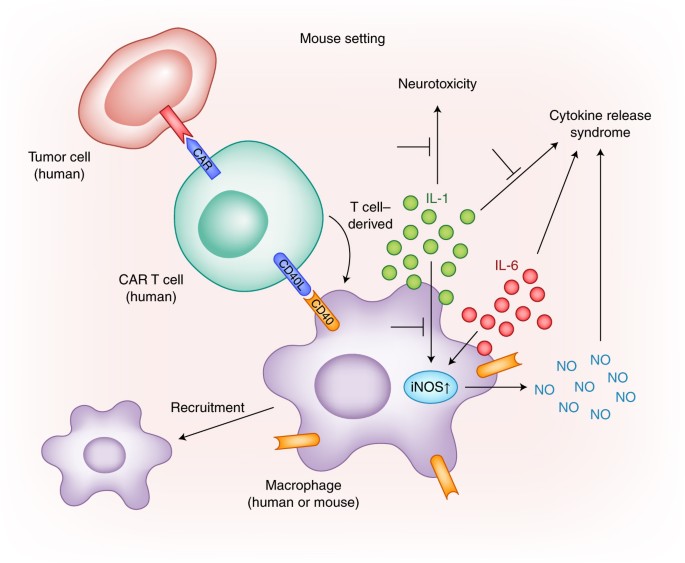 Cytokine release
syndrome (Rooney er al., 2018)
Cytokine release
syndrome (Rooney er al., 2018)
T-cell-based activation or lysis of immune cells will induce the release of IFN ? or TNFa, which leads to the activation of macrophages, dendritic cells, other immune cells and endothelial cells. The activation of these cells leads to further release of pro-inflammatory cytokines. Macrophages and endothelial cells produce large amounts of IL-6, which activates T cells and other immune cells and creates a positive feedback loop leading to a cytokine storm, which induces the release of more cytokines and chemokines, as well as the upregulation of acute phase proteins. Cytokine storms can occur as a result of infection (neo-crown), disease (autoimmune diseases, hematologic diseases, graft-versus-host disease, etc.), and medical-derived tumor therapy (CAR-T).
Cytokine storm syndrome is heterogeneous, with common symptoms of immune dysregulation, triggering excessive inflammation, fever, hematocrit, splenomegaly, hepatitis, coagulopathy, and potentially fatal multisystem organ dysfunction.
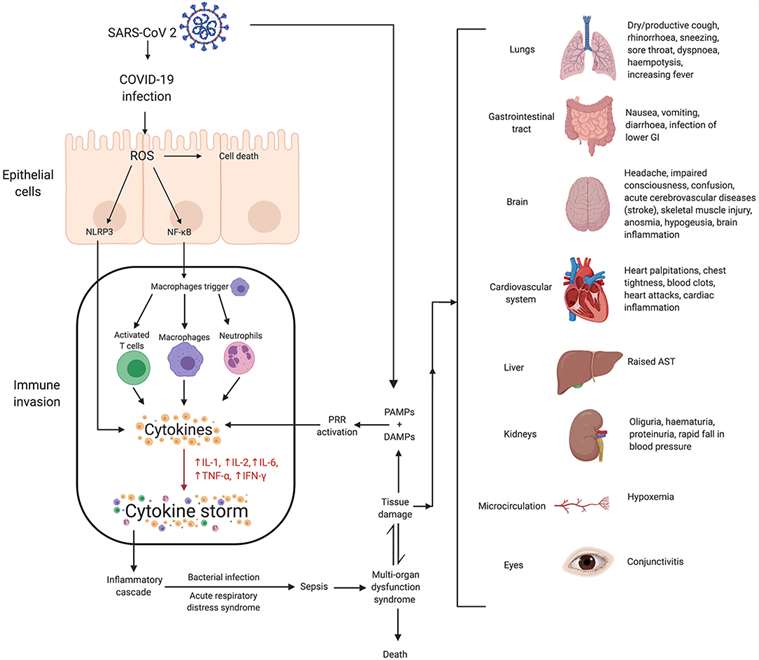 Mechanisms of SARS-CoV-2 associated cytokine storm and associated
damages (Bhaskar et al., 2020)
Mechanisms of SARS-CoV-2 associated cytokine storm and associated
damages (Bhaskar et al., 2020)
Creative Proteomics has developed multiplex cytokine panels based on Luminex technology that is capable of detecting multiple markers at once. With only 25-50ul of sample, up to forty protein markers can be detected simultaneously with high sensitivity and wide dynamic detection range. Customized service is available, and multiple factors in the same panel can be combined to meet the needs of more researchers in different research areas.
References:
- Rooney, C., & Sauer, T. (2018). Modeling cytokine release syndrome. Nature Medicine, 24(6), 705-706.
- Bhaskar, S., Sinha, A., et al. (2020). Cytokine storm in COVID-19—immunopathological mechanisms, clinical considerations, and therapeutic approaches: the REPROGRAM consortium position paper. Frontiers in immunology, 11, 1648.


